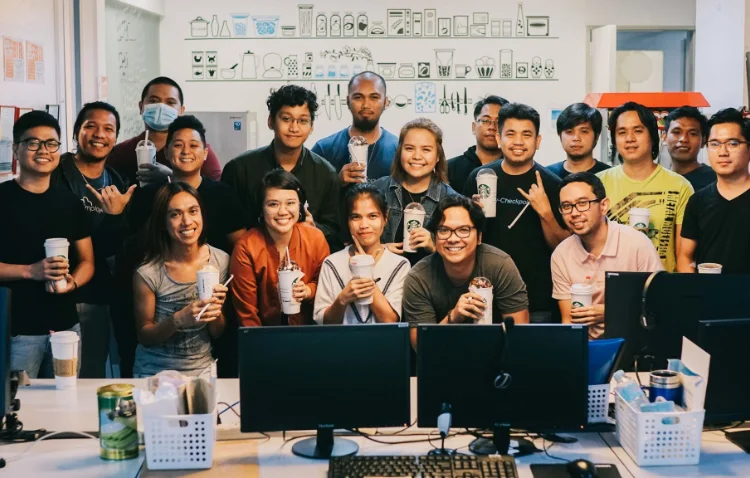It is becoming more and more common in the developing world to use microservices as developers look for ways to create larger, more complex applications that are constructed from smaller services that work together to provide bigger, more integrated functionality.
Several tools are now available to simplify building apps using a piece-by-piece approach that is, in a sense, less mind-boggling than taking a look at everything all at once.
Our discussion today will focus on microservices, the benefits of using them, and a few example codes.
Microservices: What Are They?


Java developers are expected to have a deep understanding of microservices (a style of service-oriented architecture) wherein applications are developed as a collection of different services rather than a whole application.
There are multiple independent applications instead of a monolithic application that can run on their own and can be created using different programming languages.
Often, complex and large applications can be broken up into simpler, independent processes that can be executed independently.
A set of smaller apps work together to provide the functionality of a giant, monolithic application.
As your business scenario is captured by microservices, the question is, "What problem are you trying to solve?".
The program is typically developed by a small engineering team with a variety of programming languages and frameworks.
Every program involved is versioned, performed, and scaled independently.
It's important that microservices with unique URLs or names interact with one another and remain available and consistent even when failures occur.
Microservices - What Are Their Benefits?

One benefit of using microservices is that they do not require a single coding language, which means developers can use whichever programming language they are most comfortable with.
It allows developers to create programs faster and with lower costs and fewer bugs.
The low costs and agility may also be attributed to being able to reuse these smaller programs on other projects, creating greater efficiencies.
Java Microservices Framework Examples
For Java development, you can utilize several microservices frameworks. Here are a few:
1. Swagger
Allows you to document APIs and create a developer portal for users to test your APIs.
2. Spring Boot
Inversion of Control, Aspect-Oriented Programming, and other languages are supported by this Java microservices framework.
3. Jersey
A very easy way to add JAX-RS APIs to Java applications is with this open-source framework.
There are a number of other options you can consider, like Spark Framework, Dropwizard, Ninja Web Framework, Play Framework, RestExpress, Restlet, Restx.
Using DropWizard To Create
The DropWizard library provides you with a lightweight package of mature and stable Java libraries.
In addition to these, the application uses Liquibase, Mustache, Joda Time, and Freemarker, Jetty for HTTP, Jersey for REST, Jackson for JSON, Metrics, Guava, Logback, Hibernate Validator, Apache HttpClient.
How to set up Dropwizard with Maven?
You should add the dropwizard.version property to your POM with the latest version of DropWizard.

Using this tool, you can create a Maven project, create configuration classes, application classes, representation classes, resource classes, health checks, and build Fat JARS.
Sample code:


Using Spring Boot for Microservices
By using Spring Boot, you can integrate Java apps with your own apps and use Tomcat as your embedded server, so you won't have to deal with Java EE containers.
These are some of the Spring Boot projects:
- Spring Batch: Batch operations involving high levels.
- Spring Security: To support authorization and authentication.
- Spring REST Docs: Providing documentation for RESTful services.
- Spring Social: To connect to APIs for social media.
- Spring Mobile: Web apps for mobile devices.
- Spring IO Platform: Versioned application distribution for enterprise-level
- Spring Framework: Web apps, dependency injection, data access, messaging, and transaction management.
- Spring Cloud: Build or deploy microservices using distributed systems.
- Spring Data: Map-reduce, relational, or non-relational data access microservices.
Sample code:

Restlet
It helps developers build RESTful APIs that are fast and scalable.
This routing and filtering software supports Java SE/EE, OSGi, Google AppEngine (part of Google Compute), Android, and more.
There is a steep learning curve with Restlet, which is made worse by a closed community. However, StackOverflow is a great place for getting help.
Sample code:

Play framework
Scala and Java developers can easily create, deploy, and build Web applications using the Play Framework.
Using Play Framework makes it easy to handle parallel remote calls for RESTful applications.
Additionally, Play Framework supports async and has one of the biggest communities among microservice frameworks.
Sample code:

JERSEY
Jersey is an open-source RESTful framework based on the JAX-RS specification.
Its applications can extend existing JAX-RS implementations to add features and utilities that will simplify client development and simplify RESTful services.
As well as having great documentation loaded with examples, Jersey is fast and extremely easy to use.
sample code:

Work with world leading tech businesses
We connect high-performing software engineer talent in the Philippines with some of the world’s leading and most innovative Tech companies.
Submit CV













